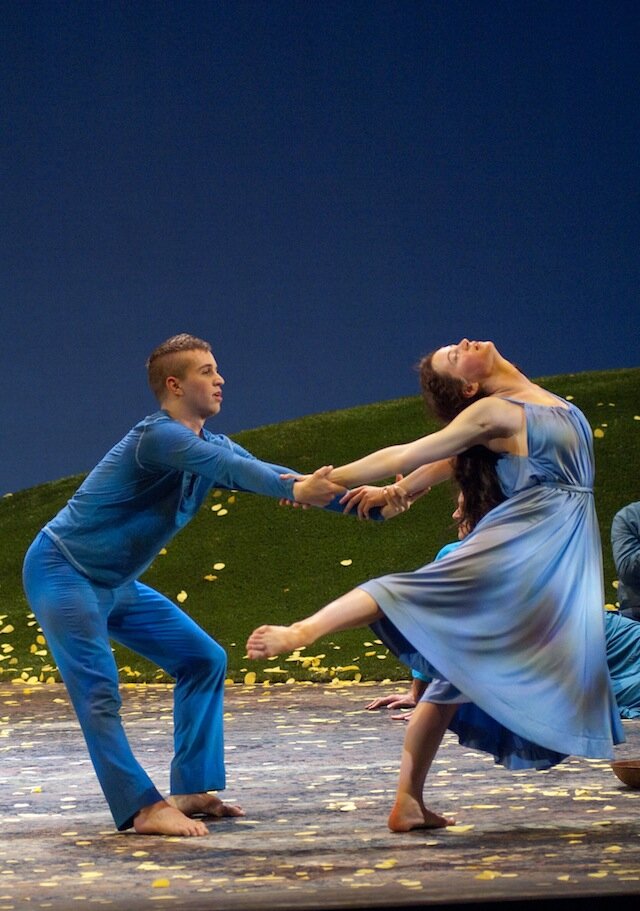
There’s not as much dance in Seattle Opera’s Orphée et Eurydice (which plays March 7 and 10 before closing) as there could be; stage director José Maria Condemi decided to cut the 20 minutes of celebratory dance that ends Gluck’s opera. But there’s still plenty, choreographed by the Athenian Yannis Adoniou, enough to confuse the opera newcomer who has prepared more for, you know, singing. (Read our full review here.)
Blame (or praise) the French, whose catholic tastes demanded that they get a little, or a lot, rather, of ballet along with their opéra. That’s one reason why the Ballet de l’Opéra de Paris is the oldest national ballet company in the world. We owe it all to King Louis XIV, who wearied of the quality of dance provided by the nobles in his court, and founded a royal dance school. One thing led to another.
(Dance isn’t the only evidence of French influence in Orphée. The tragic Greek myth becomes, in the opera, a lesson for lovers: The way to win someone back, Amour tells you, is not to look at them. Solid advice, but of course soft-hearted Orphée has trouble with it.)
In Condemi and Adoniou’s hands, the dances are as functionally important as arias, in terms of telling the story. Just as an aria might allow William Burden’s Orphée to bare his soul, the dances express mourning, emotional roadblocks, the serenity of companionship. Adoniou’s idiom here is much more modern dance than ballet (his dancers–Daniel Howerton, Scott Bartell, Kate Chamberlin, Roxanne Foster, Kyle Johnson, Marissa Quimby, Demetrius Tabron–are barefoot), but their movements are nonetheless balletic.
Adoniou, who danced classical ballet himself, before joining Alonzo King LINES Ballet, says, “I didn’t want to be in a form where everything had been determined by someone else a hundred years back. I was interested in today.”
When you see his choreography for the Furies, it’s such an inextricable part of the opera that it’s difficult to imagine it being danced on its own. You understand what Adoniou means when he says, “With the Furies, it’s a struggle for survival, about pushing through the most difficult, uncomfortable experience in your life.” The dancers surround Orphée and impersonate a taffy-like prison.
Only occasionally do you recognize formally specified movements: the men lock arms, shoulder to shoulder, and the women lean back, arms outstretched–it’s an arrangement they will echo in the Elysian Fields section of the opera. But when the Furies do it, it feels like chainlink fencing with barbed wire on top; when the Blessed Spirits do it, you can see the men are supporting the women as they let go of past hurts and angers. That idea is picked up again with arms curved in front, forming a bowl, and then lowered, widening, as it all pours out.
Having elaborated on that, Adoniou has the dancers pair up, sliding carelessly down a green sward. There’s an element of folk dance to the steps of their pas de deuxs, then the willowy women are lifted up, then pantomime a fatal swoon, again and again. It’s both poignant and, in repetition, reassuring. The women rise again, to dance. This section–minus the hillside tobogganing–would, I think, stand on its own. It’s not the kind of dance that leaves you struck dumb by its innovation, or emotional heft, but its playfulness and serene joy are purely tonic.